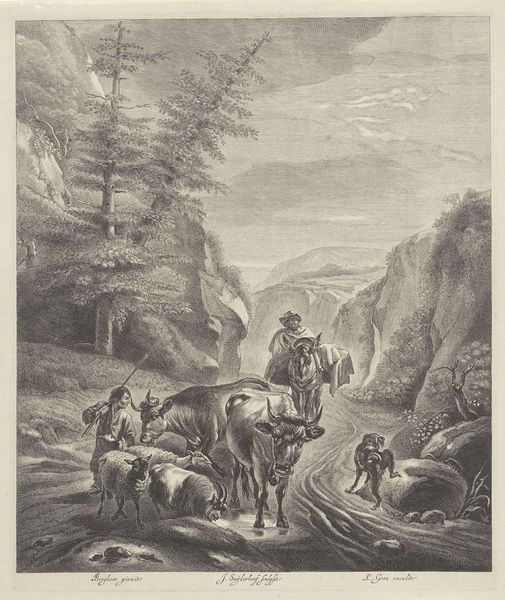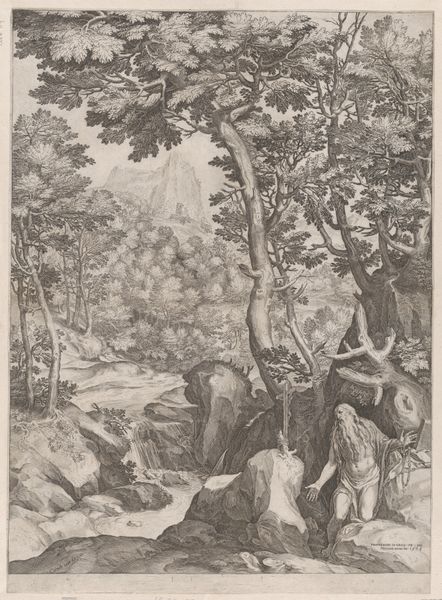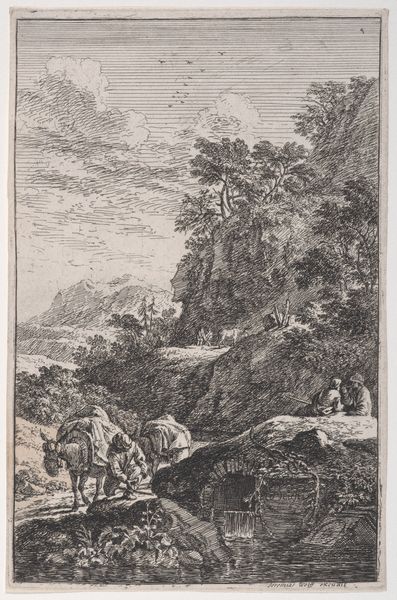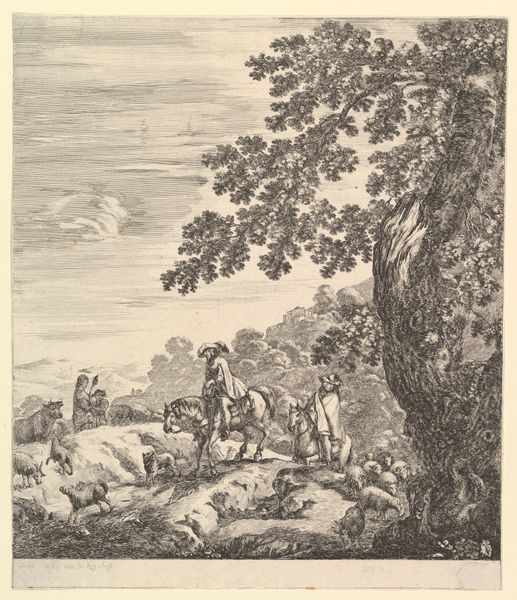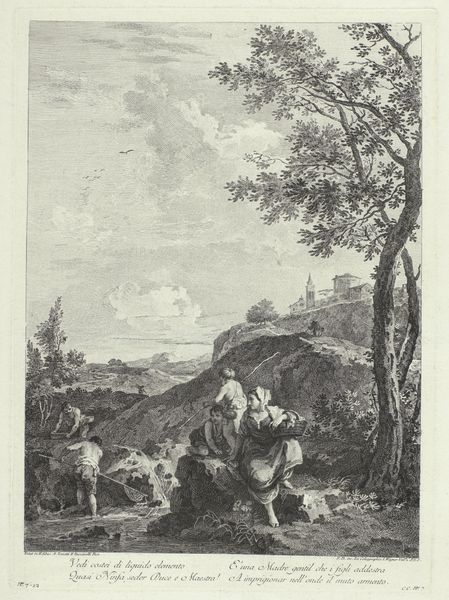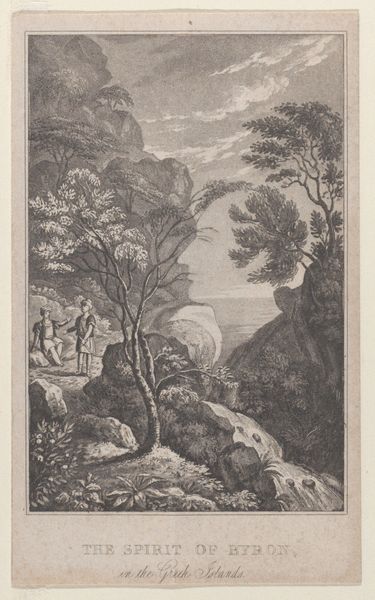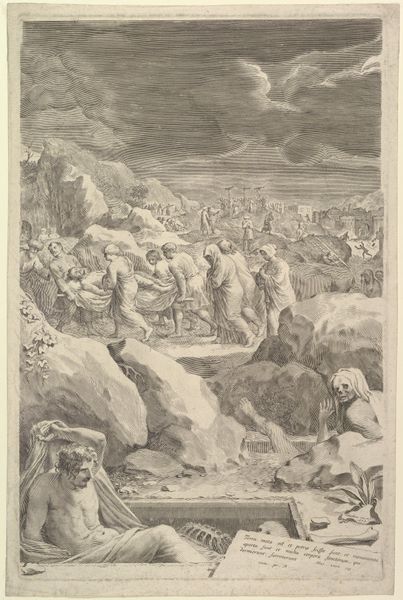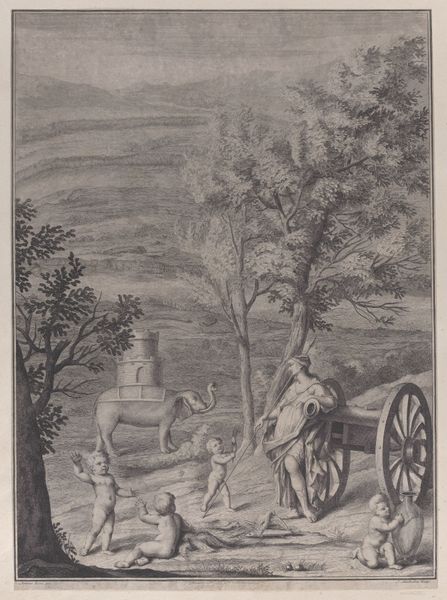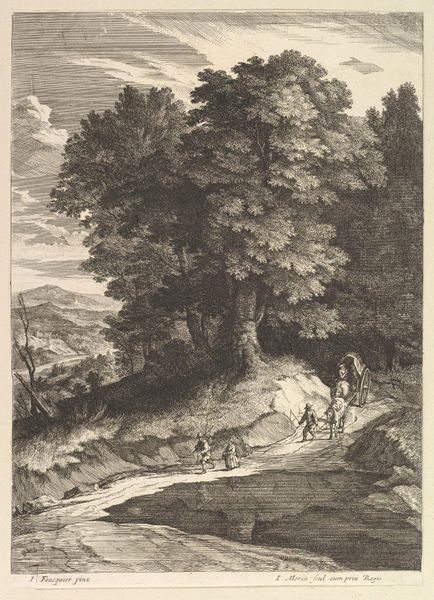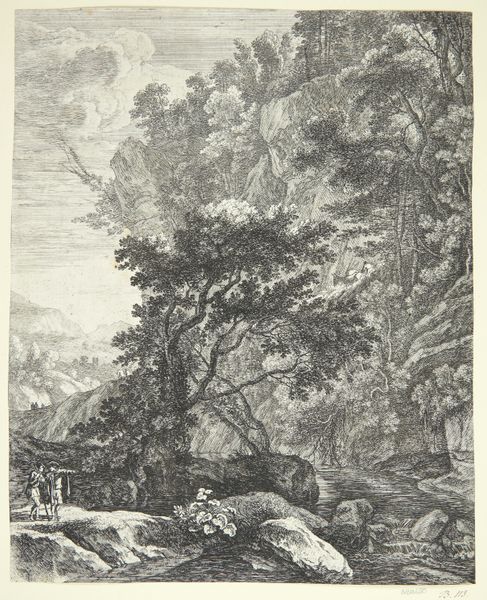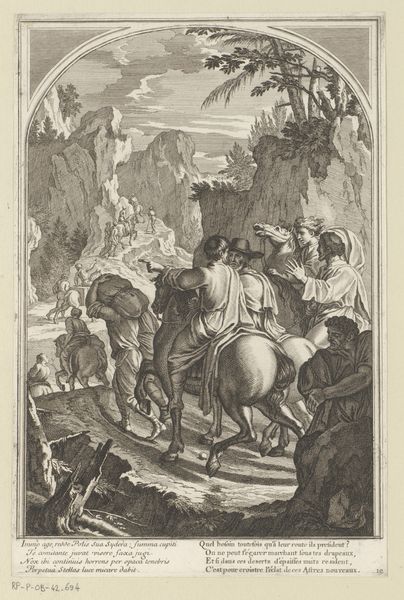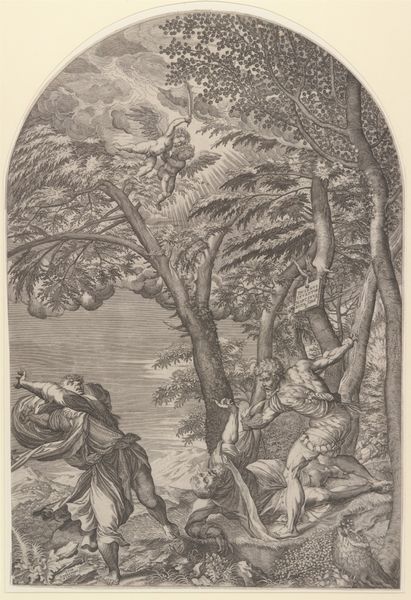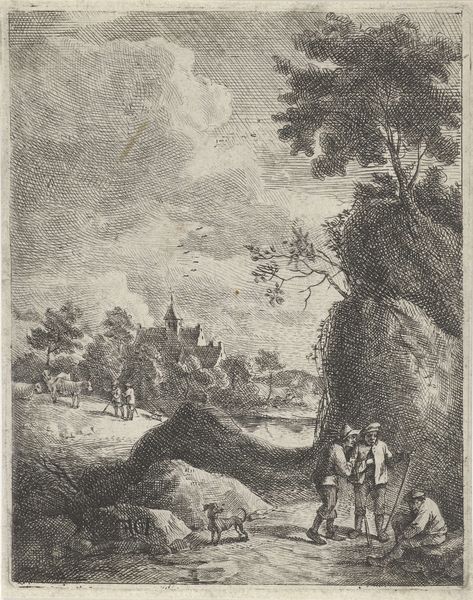
Men quarrying or mining for gold, from 'Danubius Pannonico-Mysicus' (Volume 3) 1726
0:00
0:00
drawing, print, engraving
#
pencil drawn
#
drawing
#
baroque
# print
#
landscape
#
figuration
#
pencil drawing
#
history-painting
#
engraving
#
realism
Dimensions: Sheet (Trimmed): 17 1/2 × 12 11/16 in. (44.4 × 32.3 cm)
Copyright: Public Domain
Curator: Here in gallery 27, we're looking at Jacob Houbraken's print from 1726, titled "Men quarrying or mining for gold, from 'Danubius Pannonico-Mysicus' (Volume 3)". It's currently part of the Metropolitan Museum of Art's collection. Editor: Immediately, I'm struck by the scale of the figures relative to the landscape. They're dwarfed by this imposing rocky environment, highlighting the sheer physical effort involved in resource extraction. There is such stark tonal contrast from the shaded tunnels of labor in the stone, to the vast expanses in the background that conveys such atmospheric perspective. Curator: Indeed. Houbraken's background was in portraiture and engraving. As an artist living and working in the early eighteenth century, it would make sense that Houbraken engages with landscape, combined with figuration and allegorical painting through an encyclopedic impulse. It was very much the fashion of the era to catalog and present the world in such volumes. Editor: I see it as such a visual documentation of colonialist extractive practices. These men are literally carving into the earth. What power dynamics are implicit here, in a vision of "mastery" over nature and labor? Curator: You bring up a good point. Consider that in this period, these kinds of activities were often directly connected to imperial ambitions and the accumulation of wealth and power by the few. What's happening on a systemic level shapes how images like these are created and circulated. This publication, "Danubius Pannonico-Mysicus," after all, aimed to chart a geographical region. Editor: Precisely. The print becomes not just an illustration but an artifact embodying those power relations. And that cart laden with findings really accentuates that purpose. We see the transformation of this once bountiful raw material, mined under very tough circumstances by laboring subjects of industry, converted into a precious commodity. What are the economics of display? Curator: And how does displaying art shape our cultural memory? By re-examining these images, we create a space for discussion about the complex ways historical narratives influence the present. Editor: Absolutely. Recognizing that art, even seemingly neutral depictions of work, are deeply entrenched in political, and social structures pushes us towards a more thoughtful way of understanding and engaging with these themes of extraction in contemporary culture. Curator: Understanding that relationship really enriches the experience we get from it and hopefully challenges conventional wisdom around our understanding of the development of visual media too. Editor: Indeed, providing the appropriate critical lens is a civic responsibility.
Comments
No comments
Be the first to comment and join the conversation on the ultimate creative platform.
